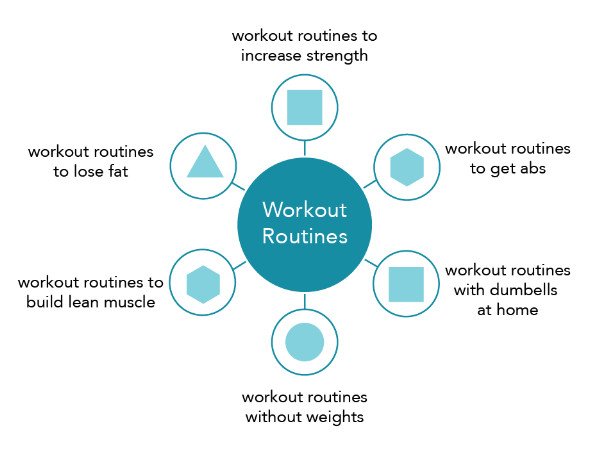There is a stack of Wired magazines in our office dating back years. It’s amazing what the editors and writers of that publication thought were going to be the next big thing.
Beyond the information about gadgets and science and that spooky thing called the internet, what stands out in these articles is the care the writers took to explain tricky-to-understand concepts, ideas, and technologies.
There’s an art to pulling off the transfer of information from the studied to the curious. Especially now in a world dominated by social media where attention spans are dwindling, and users crave easy-to-consume content in easily accessible formats.
That art is called communications. In this article, we look at the role of marketing communication and the importance of a communications strategy. Let’s get into it.
What is marketing communications?
Let’s be clear: the goal of all marketing is to get a consumer to push the buy button. Whether it’s a Bluetooth speaker, software subscription, or (gasp!) extended auto warranty, marketers want to get you from considering a purchase to plunking down your credit card.
The science of marketing has changed a lot over the years. Once upon a time, planners (the folks that place advertisements) had a broad idea of what type of people would watch a t.v. show or read a magazine. Using that knowledge let them be strategic in where they would buy space.
These days, planners have so much more information and they can hyper-target ads on almost any medium. Of course, that got a little wacky, and now our digital marketing friends are going back to the drawing board to find and place advertisements. Let’s see how that plays out.
Communication is the tool that we marketers use to bring your attention to that thing that you must have right now.
What keeps agencies like ours busy is the incredibly broad swath of available communication channels to move a consumer into awareness, consideration, convincing, and purchasing.
Newsletters, brochures, blog posts, placed articles (where a marketer pays a publication to run an article), social media, video, sales collateral, and so much more. Note, we’re excluding pure advertising from this list because communications like these are designed to inform much like newspapers and magazines.
Call it soft advertising if you will, because it is transmitting information about why this product is better than that.
The keys are connection, trust-building, and informing. The way you do that depends on the audience.
It always starts with defining your audience
Ever tried to talk to a polar bear about engineering?
Okay, that’s ridiculous. But we’ve seen where companies produce content that’s only there to serve their needs and not the needs of your audience. Knowing who is going to buy your product or service is essential when building out a brand strategy. The same is true here.
Who is going to read your content? If it’s engineers, you’ll need to write data-first articles that are interesting to read but don’t include extraneous information. Doctors need facts in quick, digestible articles because time is not their friend. Consumers, though, will want to hear how this new set of wireless headphones is going to change the way they work or exercise or drown out the noise from their neighbors.
So, make sure you know who you’re talking to so you’ll know how to talk to them.
What’s the best way to communicate to my audience?
There are dozens of ways to connect with an audience, including Super Bowl ads and those planes that fly overhead trailing headlines. If you’re looking for something a tad more actionable, consider these options:
Newsletters — One of the best ways to engage, inform, and entertain an audience. We’ve produced print and email newsletters for external and internal readers across a number of different industries.
Blog Posts — Company news, project stories, personnel profiles, industry perspectives are just some of the things you can include on your website. It’s great for visitors to learn more about your company and great for the search engine crawlers to show your value to the internet.
Brochures — A classic in the communications business, brochures are great ways to “go home” with people that are interested in your product or service. The key is to be carefully focused in the content so that you don’t confuse the reader when they’re away from you.
Sales Collateral — We’ve worked with a multitude of sales people who use sales collateral one sheets as leave behinds. Sales collateral should clearly spell out expertise while telling a strong story about the company and its history. Good photography and clean designs are also musts.
Placed Articles — Our PR friends use placed media to ensure that their client’s message is not diluted by some pesky journalist. Utilizing articles in print publications or on websites is a great way to own your narrative and push important information.
Social Media Content — Social Media Managers used to be nice to have, but now they are a necessity. Gone are the days of a shotgun approach to creating content for social media; now, it’s about social media platform-specific content delivered to the right audience at exactly the right time. For businesses without internal resourcing, agencies like ours become extensions of your team, delivering targeted social media content that connects and converts.
What goes into building a communications strategy?
Okay, let’s make this a list.
- Define the message
- Define the audience
- Determine the best way to get that message to your audience (newsletters, sales collateral, blog posts, social media posts etc.)
- Define the social media channels (if it’s social media content)
- Brainstorm, interview, research, write, edit, write, edit.
- Imagine, design, flow copy, design, have the writer cut copy, design.
- Publish when and where you know your audience will see the material.
With the rise of social media affecting the way the world consumes content, we take a deeper dive into social media strategy to offer some helpful guidance for you and your social media team.
How do you organize content ideas?
Great question.
Create Content Pillars
Creating content pillars should be one of the first things as part of your social media strategy. Content pillars help you guide and plan posts so you can maximize the return on your social media efforts.
Content pillars key topics your brand will consistently discuss, amplify, and create content for on social media. You may also know these as content categories or content buckets.

The hub-and-spoke method of planning is one of the easiest to use and follow.
In general, 2 – 5 content pillars are sufficient with the weighting across pillars based on your key audiences and your key audience needs. If you haven’t already, you should definitely look at adding pillars to your social media content strategy.
Use a Content Calendar
A social media content calendar (social media calendar) is a tool that helps you plan and schedule social media posts ahead of time. Leveraging your content pillars is an invaluable part of the content creation process, taking the stress out of continually having to generate content ideas for posts by allowing you to plan posts 1-3 months ahead. In short, it helps to supercharge your social media posting schedule.
There are dozens upon dozens of paid tools that you can use, including Airtable and Panoly. Heck, there’s Hootsuite and Buffer and lots more. Hop on the Google machine and search for it. We’ve used many of them over the years and paid a lot of money for some to realize that the easiest and most efficient is a good old-fashioned Google Sheets. It works for us.
When it’s well maintained and executed, a social media content calendar is a godsend for social media planning, helping you decide what content to share while also tracking the deadlines. This helps focus your social media content plans and gives you the peace of mind knowing you’re covered for upcoming social media posts. There are a number of free social media calendar tools available, search around for the one that best suits you.
Don’t post and ghost, please
Look, nobody likes a know-it-all who’s talking a mile a minute spouting useless information. At the same time, the people who are reading your content are invested in what you’re saying. They’ve searched you out, engaged with your content, and want to learn more. Just about the worst thing you could do is abandon them. So, create a calendar and stick to a consistent schedule. It doesn’t have to be daily, but it should be once a month.
Okay, but I need help with communications!
Contact us! We’ll walk you through every step, work hand in hand with you, and get you going on a communications campaign that will engage, inform, and help you connect.
